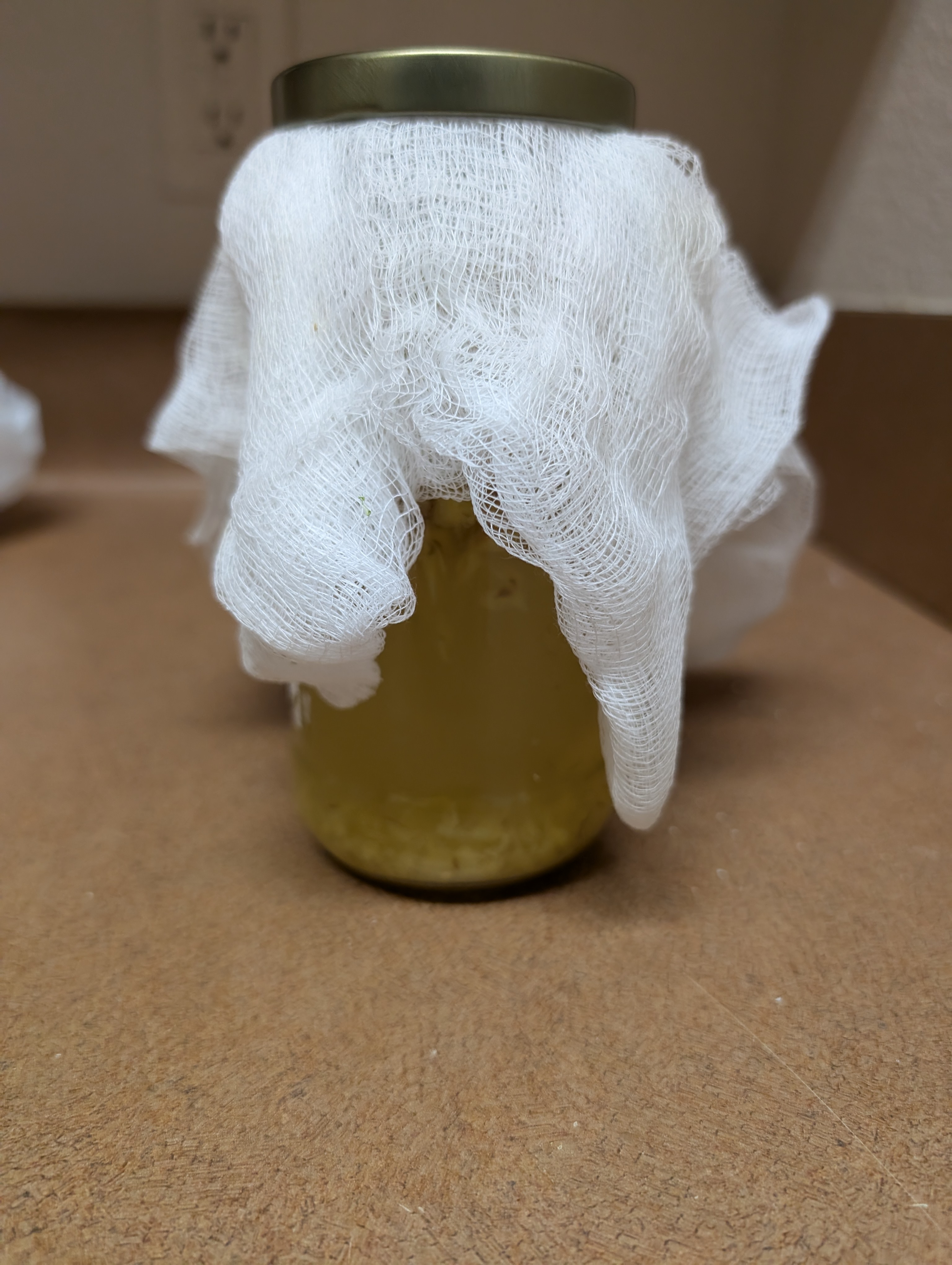
Figure 1. Sealed Ginger Bug.
HELLOOOO! Here lies my ginger beer updates. Started 1 March 2025.
To make my ginger bug, I grated my ginger with the larger side grate, It was enough ginger to fill up probably close to an inch vertically of the bottom of my jar. Likely this was beyond enough for the bug. We shall see if this has led to a stronger ginger flavor and/or shorter wait time for initial fermentation. I added approximately an equal amount of sugar to the grated ginger. I boiled some water to dechlorinate it, and then cooled this water to close to room temperature. The water was then used to fill up the rest of the jar with a little bit of space at the top. I folded over some cheese cloth and placed it on top of the jar. The lid to the jar is placed on top, though not twisted, to secure it in place. I have a rubber band I can use, but for now, this method seems to work just fine. See Figure 1 for the set up.

Figure 1. Sealed Ginger Bug.
Initially, I would add ginger and sugar each day to feed it, however, I don't think that adding the ginger is necessary in this case because of the inital amount of ginger I had. Some other people online have not needed to add ginger to a bug. Just adding sugar should be fine. After the first 2-3 feedings, I switched to only adding sugar. The ginger bug generally stays sweet, so I may be adding too much sugar. See Figure 2 for a photo of the bubbles created in the fermentation process. These bubbles reappear daily. They may appear multiple times a day if I stir the bug multiple times per day. Overall, I kept the bug going for about 4 days before using it.
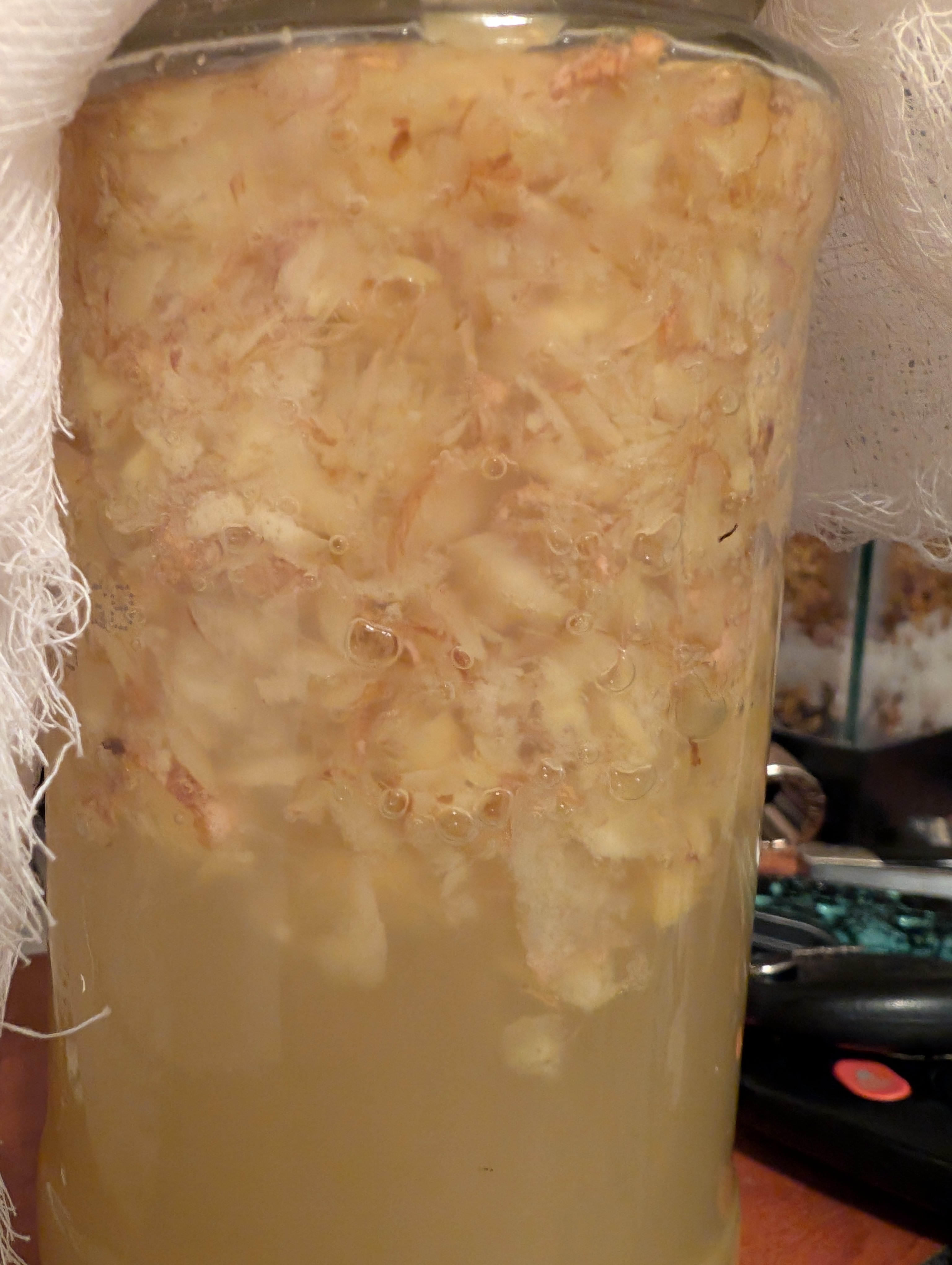
Figure 2. Bubbles from fermentation.
To make the part of the ginger beer that the bug is added to, I put some ginger in my blender and covered it with water (Figure 3). I blended fairly finely, though not super duper finely so that when I filtered it, I could still get most of it out (Figure 4). This mixture was completely digusting by the way. Super bitter. Didn't even taste like ginger. I do not recommend trying it more than once. It gets worse every time.
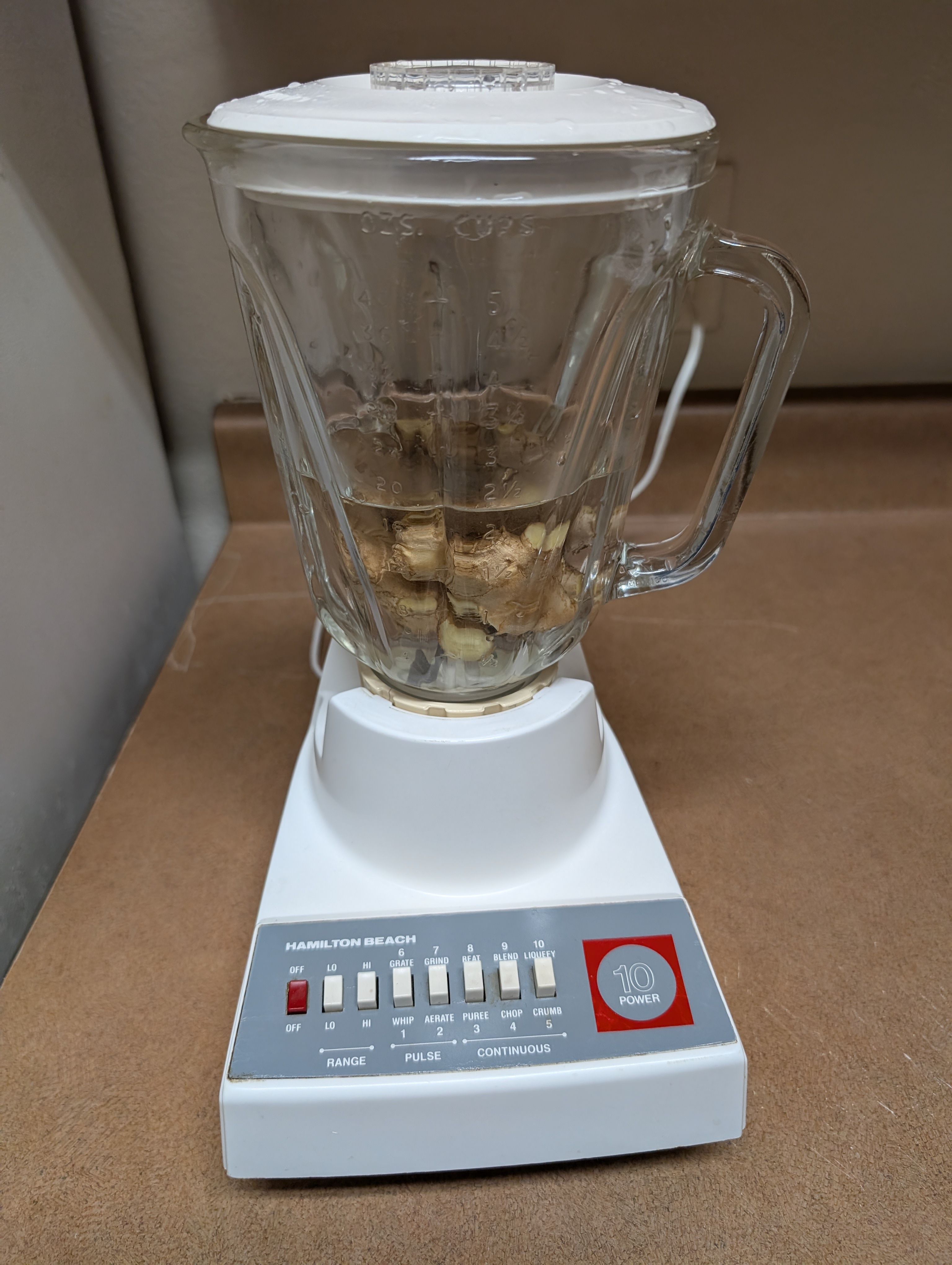
Figure 3. Ginger and water in blender.
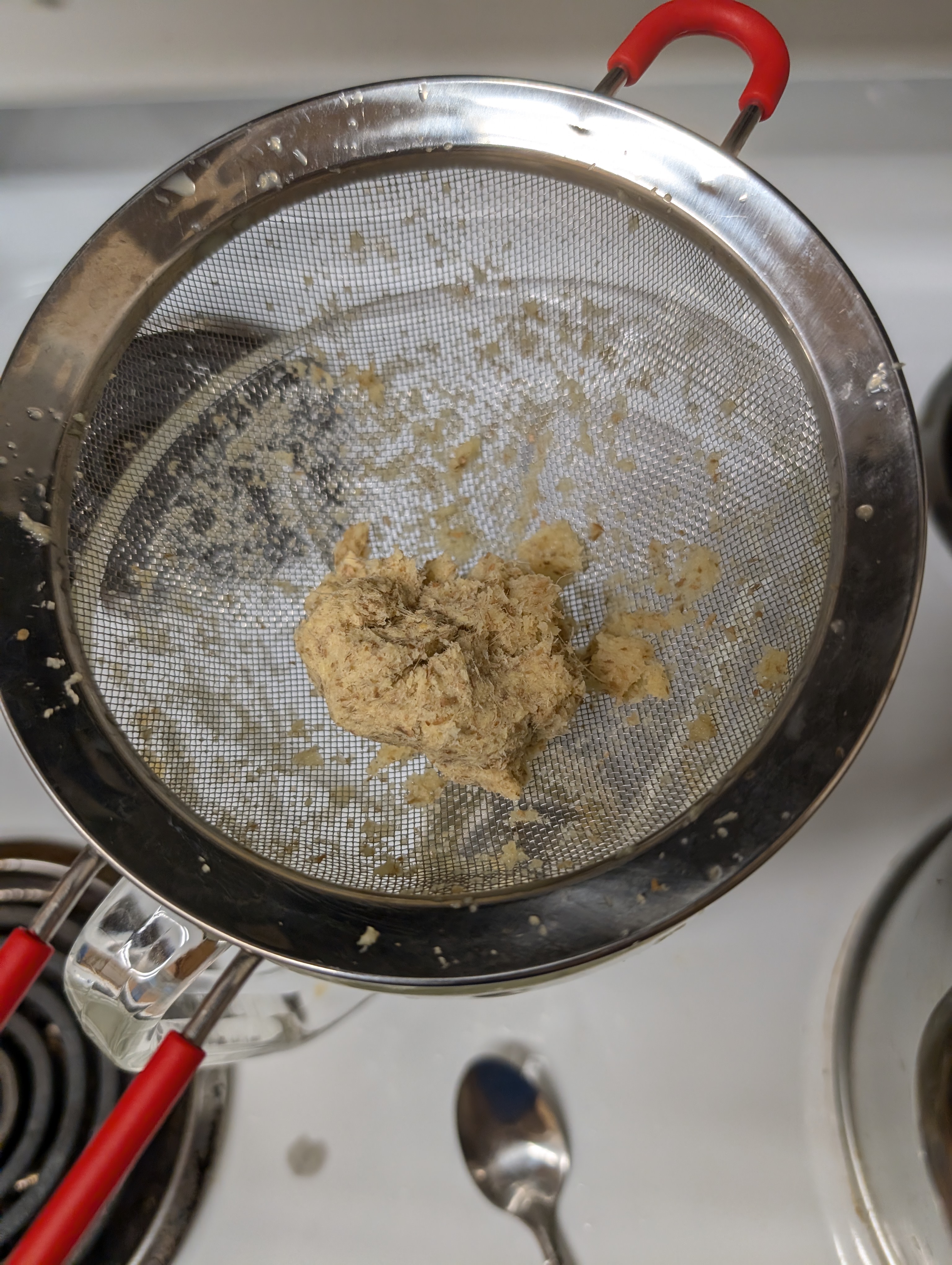
Figure 4. Strained solids from the blended ginger.
Next, the strained liquid was added to a pot and heated (Figure 5). Prior to reaching a boiling point, sugar was added. Adding four spoonfuls of sugar took away the bitter taste, so that you had just a solid ginger flavor, not sweet though. I added way more sugar than that though. I added sugar until the mixture was quite sweet. You get the strong ginger flavor, and then an aftertaste of sugar. All of this was left to combine for quite a while. Some extra water was added as well. Many add the water afterwards, but because I would have to boil any water I use anyway to dechlorinate it, I decided to add the water now as there isn't any bacteria involved in this part of the process. I put the whole pot into the fridge to help bring it to room temperature more quickly. Obviously, ideally this would be allowed to cool outside of the fridge, but I was feeling really impatient. Sorry environment. Sorry fridge.
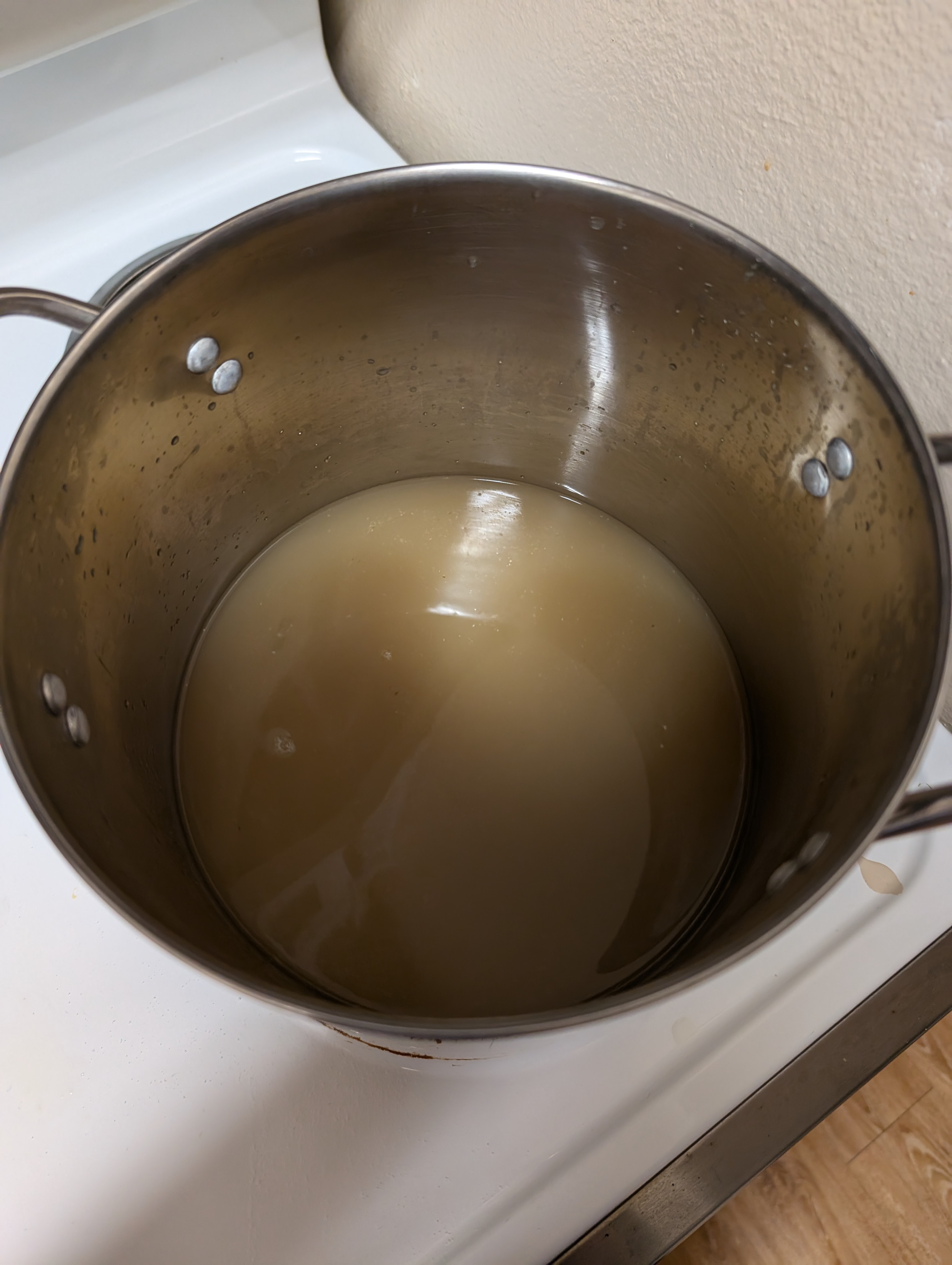
Figure 5. The strained liquid in the pot.
Finally, once it was cooled down, the bug was added to the mixture in the pot (Figure 5). The mixture truly was still a little warm. I would estimate it to have been at 80 degrees Fahrenheit. This mixture was then poured into the cleaned blender because it has a pouring lip. From the blender, the mixture was poured into two 16.9-ish fl oz glass swing-top bottles and one 16.7 fl oz Coca-Cola bottle (Figure 6). This was left in my pantry to ferment! Obviously, in Figure 6, you can see that the beer right now is quite opaque. This is mildly concerning to me. The good news is that this opacity comes from the blended mixture, not from the bug. So, it should not be from an error in the fermentation process, though the ginger bug is a bit cloudy as well. Basically, I think this is simply from the blending process, leading to a lot of very small particles, which are remaining suspended in the water. It should not affect the quality of the product, I think.
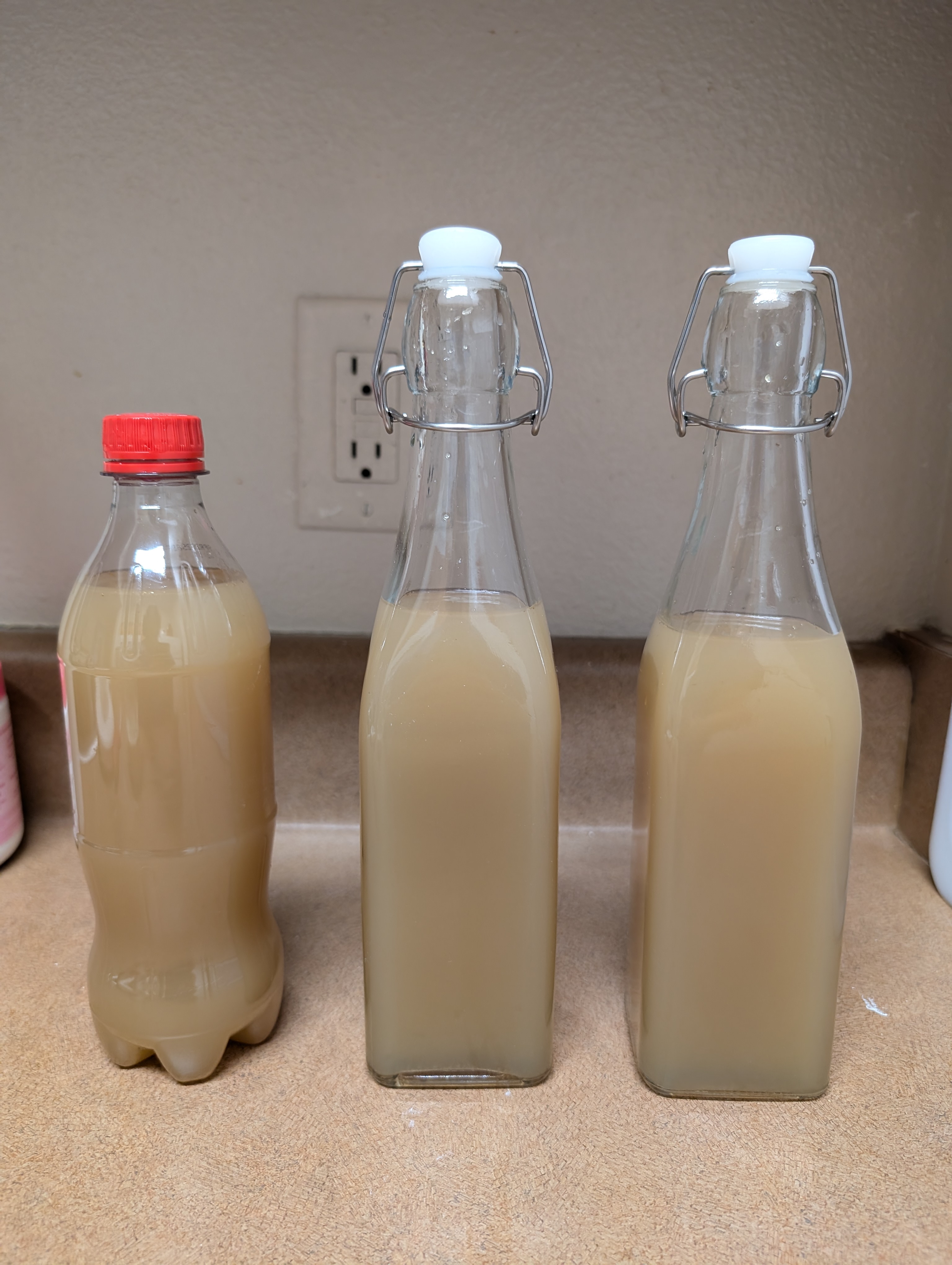
Figure 6. Coca-Cola bottle and two glass swing-top bottles filled with the ginger beer mixture.